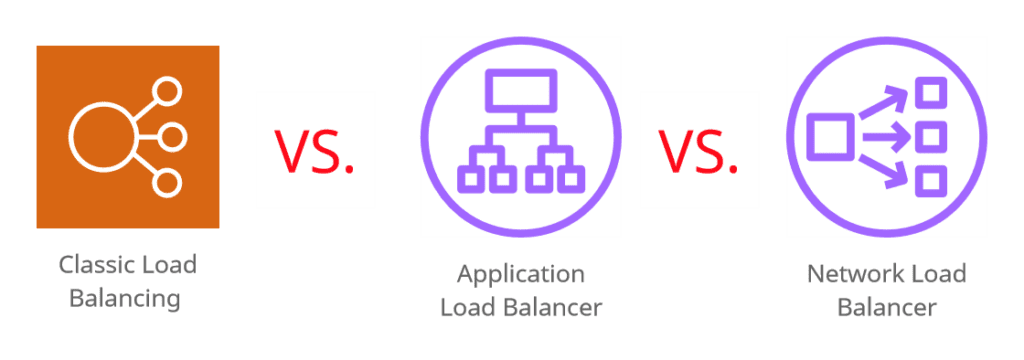In the realm of cloud computing and distributed systems, load balancers play a crucial role in distributing incoming network traffic across multiple servers. Among the various types of load balancers, Application Load Balancers (ALB) and Network Load Balancers (NLB) are two prominent options, each designed to address specific needs and use cases. In this article, we’ll delve into the differences between ALB and NLB, helping you understand which one is the right choice for your application.
Understanding ALB (Application Load Balancer)
ALB, as the name suggests, operates at the application layer (Layer 7) of the OSI model. It intelligently routes traffic based on the content of the request, making it ideal for applications that require advanced routing capabilities.
Definition and Purpose
An ALB is a load balancer that operates at the application layer, capable of handling HTTP and HTTPS traffic. Its primary purpose is to distribute incoming requests to target instances based on various factors such as URL path, host headers, and request attributes.
Features of ALB
- Advanced routing capabilities
- Support for containerized applications
- Integration with AWS services like ECS and EKS
- Built-in support for WebSocket and HTTP/2 protocols
Use Cases
ALB is well-suited for:
- Web applications with multiple microservices
- APIs with different endpoints and routing requirements
- Containerized workloads orchestrated by Kubernetes or ECS
Understanding NLB (Network Load Balancer)
NLB, on the other hand, operates at the transport layer (Layer 4) of the OSI model. It focuses on efficiently balancing TCP and UDP traffic across backend servers, making it ideal for high-throughput applications.
Definition and Purpose
NLB is a load balancer that operates at the network layer, distributing traffic based on IP addresses and ports. Its primary purpose is to provide scalable and high-performance load balancing for TCP and UDP-based services.
Features of NLB
- Ultra-low latency
- High throughput
- Static IP address for each availability zone
- Support for TCP and UDP protocols
Use Cases
NLB is suitable for:
- High-performance applications requiring low latency
- TCP-based services such as gaming servers and VoIP applications
- UDP-based streaming services and IoT platforms
ALB vs NLB: Key Differences
|
Aspect |
ALB |
NLB |
|
Architecture |
Operates at the application layer (Layer 7) |
Operates at the network layer (Layer 4) |
|
Target Groups |
Targets instances based on content of requests |
Distributes traffic based on IP addresses and ports |
|
Protocols Supported |
HTTP, HTTPS, WebSocket, HTTP/2 |
TCP, UDP |
|
Routing Mechanism |
Based on URL path, host headers, and request attributes |
Based on IP addresses and ports |
|
Performance and Scalability |
Suitable for microservices and containerized workloads |
Ideal for high-throughput applications with low latency |
When to Choose ALB
Scenario 1: Microservices Architecture
If your application comprises multiple microservices with distinct endpoints and routing requirements, ALB provides the flexibility and granular control needed for effective load balancing.
Scenario 2: Containerized Workloads
For containerized workloads orchestrated by platforms like Kubernetes or ECS, ALB seamlessly integrates with these environments, simplifying deployment and management tasks.
Scenario 3: Advanced Routing Needs
When your application requires advanced routing capabilities based on URL paths, host headers, or request attributes, ALB’s rich feature set comes into play, ensuring efficient traffic distribution.
When to Choose NLB
Scenario 1: High-Performance Applications
If your application demands ultra-low latency and high throughput, NLB is the preferred choice due to its ability to handle TCP and UDP traffic with minimal overhead.
Scenario 2: TCP-Based Services
For TCP-based services such as gaming servers, VoIP applications, and database clusters, NLB’s focus on transport-layer load balancing makes it well-suited to meet the performance requirements.
Scenario 3: UDP-Based Streaming
When dealing with UDP-based streaming services or IoT platforms that rely on UDP communication, NLB provides the necessary scalability and reliability to handle large volumes of data.
Cost Considerations
Pricing Models
Both ALB and NLB offer pay-as-you-go pricing models based on factors like the number of load balancer hours and data processing. It’s essential to evaluate your application’s traffic patterns and requirements to choose the most cost-effective option.
Cost Optimization Strategies
To optimize costs, consider leveraging features like target group routing and connection multiplexing offered by ALB. Similarly, NLB provides cost-saving benefits through its efficient handling of TCP and UDP traffic.
Best Practices for Load Balancer Deployment
Security Considerations
Ensure that your load balancer is configured with the appropriate security policies and access controls to protect against potential threats like DDoS attacks and data breaches.
Performance Optimization
Implement caching mechanisms and content delivery networks (CDNs) to offload static content from your load balancer and improve overall performance and scalability.
High Availability Setup
Deploy load balancers across multiple availability zones and configure health checks to detect and automatically reroute traffic away from unhealthy instances, ensuring high availability and fault tolerance.
Case Studies: Real-world Examples
- Company A’s Experience with ALB: Company A, a leading e-commerce platform, successfully migrated its monolithic application to a microservices architecture using ALB, resulting in improved scalability and reliability.
- Company B’s Experience with NLB: Company B, a gaming company, leveraged NLB to handle the high volume of TCP traffic generated by its multiplayer online games, ensuring smooth gameplay experiences for users worldwide.
Future Trends in Load Balancing
As technology evolves, we can expect to see continued advancements in load balancing solutions, with a focus on enhancing automation, scalability, and security features. Emerging trends such as edge computing and serverless architectures will drive the need for more dynamic and adaptive load balancing strategies.
Conclusion
In conclusion, choosing between ALB and NLB depends on various factors such as your application architecture, performance requirements, and scalability needs. By understanding the key differences and use cases of each load balancer, you can make an informed decision that aligns with your business objectives and enhances the overall reliability and performance of your application.
FAQs
1. What is the main difference between ALB and NLB?
The main difference lies in their operating layers and routing mechanisms. ALB operates at the application layer and routes traffic based on content, while NLB operates at the network layer and distributes traffic based on IP addresses and ports.
2. How do I decide whether to use ALB or NLB for my application?
Consider factors such as your application architecture, performance requirements, and the type of traffic (HTTP/HTTPS vs. TCP/UDP). ALB is suitable for microservices and advanced routing needs, while NLB excels in high-performance applications with low latency requirements.
3. Can I use both ALB and NLB together in a single setup?
Yes, you can use both ALB and NLB together to address different aspects of your application’s traffic management needs. For example, you can use ALB for routing HTTP traffic to various microservices and NLB for handling TCP-based services.
4. Are there any limitations to consider when using ALB or NLB?
While ALB offers advanced routing capabilities, it may introduce higher latency compared to NLB for certain use cases. NLB, on the other hand, lacks some of the advanced features provided by ALB, such as WebSocket support and container integration.
5. How do ALB and NLB contribute to overall system performance?
ALB and NLB play a crucial role in improving system performance by efficiently distributing incoming traffic across multiple backend servers, reducing response times, and enhancing scalability and fault tolerance.
Do you like to read more Blog content? Read our blogs at PintoraBlogs

